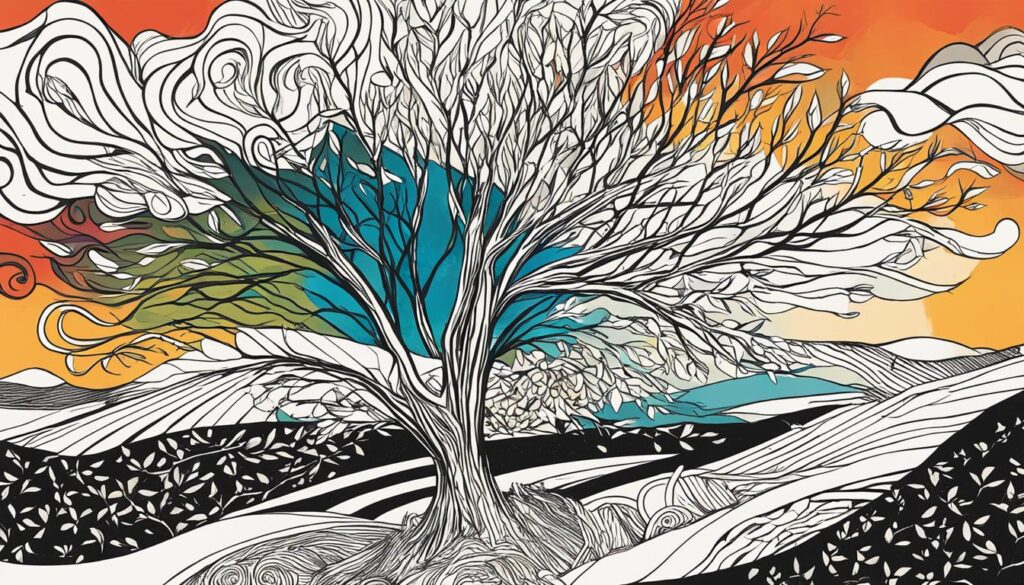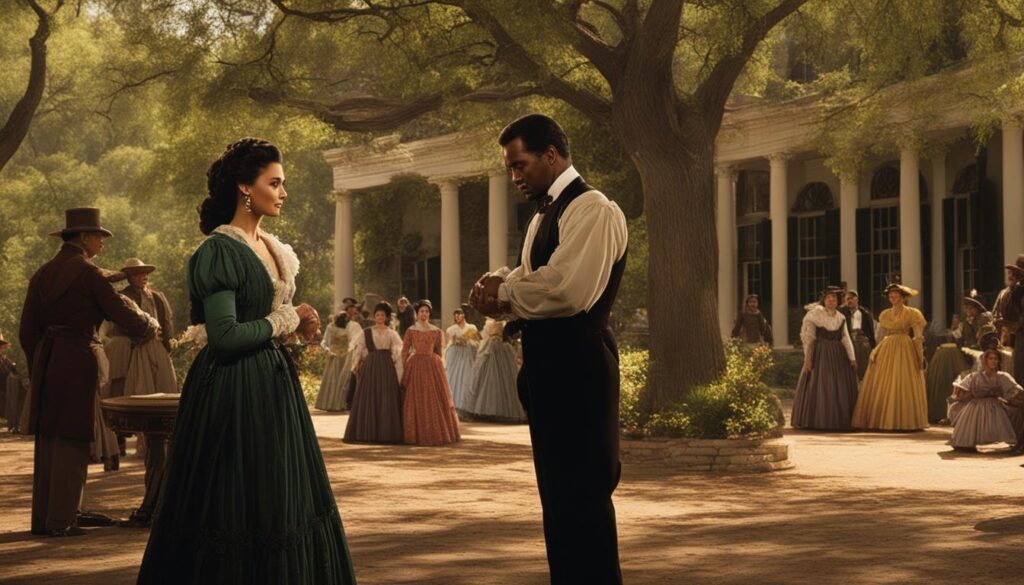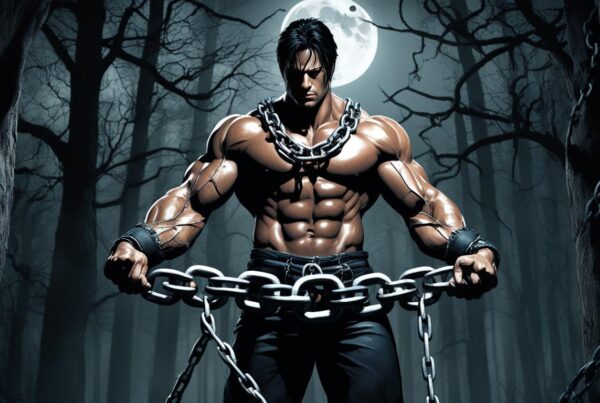If you’re on the lookout for a compelling audiobook that offers a unique perspective on a classic story, look no further than The Wind Done Gone by Alice Randall. This audiobook review will provide an in-depth analysis of Randall’s reimagined interpretation of the classic novel Gone with the Wind.
With richly developed characters and a vibrant setting, The Wind Done Gone offers a provocative and thought-provoking exploration of themes such as race, identity, and love. Throughout this review, we will take a closer look at the historical and social context of the book and evaluate its audiobook performance.
Join us on this journey as we delve into the details of The Wind Done Gone and discover why it’s a must-listen for fans of classic literature and thought-provoking stories.
About the Author – Alice Randall
Alice Randall is an American author, songwriter, and screenwriter. She was born in Detroit, Michigan, and grew up in Washington, D.C. She received her undergraduate degree in English from Harvard University and later earned an M.A. in African-American Studies from Yale University.
Randall’s career as a writer began in the 1990s with a successful career in country music songwriting. She wrote several chart-topping songs for country music stars, including Trisha Yearwood and Mark Chesnutt. In 2001, she published her debut novel, The Wind Done Gone, which received high acclaim and became a New York Times bestseller.
Her other notable works include Pushkin and the Queen of Spades, a historical novel that reimagines Alexander Pushkin and the people that influenced him in the final years of his life. She has also co-authored a controversial cookbook called Soul Food Love: Healthy Recipes Inspired by One Hundred Years of Cooking in a Black Family with her daughter, Caroline Randall Williams.
| Birthdate | May 4, 1959 |
|---|---|
| Birthplace | Detroit, Michigan, U.S. |
| Education | B.A in English from Harvard University M.A. in African American Studies from Yale University |
| Notable Works | The Wind Done Gone Pushkin and the Queen of Spades Soul Food Love: Healthy Recipes Inspired by One Hundred Years of Cooking in a Black Family |
| Awards and Honors | Tennessee Governor’s Humanities Award |
Writing Style and Themes
Randall’s writing style is known for its unique voice and perspective, often exploring stories and themes in ways that challenge conventional norms and expectations. Her work often centers on issues of race, gender, and cultural identity, and she is known for her ability to blend humor, satire, and social commentary in her writing.
Throughout her writing career, Randall has received numerous awards and honors, including a Tennessee Governor’s Humanities Award. Her work has left a lasting impact on the literary community, inspiring readers and writers alike to think critically about issues of race, gender, and identity.
Summary of “The Wind Done Gone”
The Wind Done Gone, a reimagined classic, is a novel by Alice Randall that explores the story of Scarlett O’Hara’s mulatto half-sister, Cynara. Set in the Antebellum South, the book follows Cynara’s experiences as she struggles to find her place in a world that values white privilege over her mixed-race identity.
Plot Summary
The Wind Done Gone opens with Cynara’s return to the plantation, Tara, where she grew up as a slave alongside Scarlett. After the death of her father, Cynara becomes the property of Scarlett’s husband, Frank Kennedy. When Frank dies during the Civil War, Cynara escapes from the plantation and joins the Union Army.
Throughout the novel, Cynara confronts racism, sexism, and oppression while navigating her complex relationships with both white and black characters. She finds solace in her growing connection with a Union soldier named R. who shares her passion for a future free from slavery and racism.
Main Themes
- Racism and slavery
- Identity and self-discovery
- Power dynamics and oppression
- Love and relationships
The Wind Done Gone challenges the reader to confront the uncomfortable truths of America’s past and present. Through Cynara’s story, the novel explores themes of racism, slavery, and identity in a unique and thought-provoking way.
Setting and Atmosphere
The setting and atmosphere are crucial in setting the tone and mood of “The Wind Done Gone.” The book takes place in the antebellum South, largely in the state of Georgia and on a plantation called Tata. This setting creates a world in which slavery is an omnipresent reality, and the characters are fully immersed in a society that thrives on the exploitation of Black bodies.
The atmosphere of the book is one of oppression and despair, with moments of hope and determination. Through vivid descriptions of the landscape, the reader experiences the harsh realities of life on a plantation and the struggles of the characters to break free from their circumstances.
Overall, the setting and atmosphere work together to create an immersive reading experience that transports the reader to an era and place where people were fighting for their survival and freedom.
Characters and Characterization
“The Wind Done Gone” features a cast of complex and well-developed characters that drive the story forward and explore important themes.
The protagonist, Cynara, is a mixed-race woman who is struggling to navigate her place in society while also grappling with a deep internal conflict. Her characterization is nuanced and thought-provoking, inviting readers to consider questions of identity and belonging.
Other notable characters include Cynara’s mother, Mammy, who serves as a symbol of the insidious and damaging legacy of slavery, and her childhood friend, Alice, who represents the tension between Cynara’s racially divided world.
The relationships between these characters are integral to the plot, and the author’s nuanced exploration of their motivations and interactions adds depth and complexity to the story.
Character Comparison
| Character | Traits | Motivations |
|---|---|---|
| Cynara | Introspective, conflicted | Discovering her true identity, seeking freedom |
| Mammy | Stern, traditional | Protecting her family and their legacy |
| Alice | Cheerful, optimistic | Advocating for change, seeking equality |
Through the unique perspectives of these characters, “The Wind Done Gone” provides a fresh insight into the world of classic literature, exploring the complex dynamics of race, power, and identity in a way that is both insightful and challenging.
Narrative Style and Structure
Alice Randall’s “The Wind Done Gone” is a reimagining of the classic novel “Gone with the Wind” from the perspective of Scarlett O’Hara’s half-sister Cynara. The book’s narrative style and structure are unique and add to its overall impact.
Narrative Style
The narrative style of “The Wind Done Gone” is characterized by a fluid and lyrical tone, as well as a nonlinear structure that weaves together memories and experiences from different points in the protagonist’s life. The book is also written in a vernacular style that reflects the dialect of the African American characters.
The use of flashback and foreshadowing in the narrative further strengthens the impact of the story. With these techniques, the author transports the reader back and forth in time, letting them experience Cynara’s life in a non-linear fashion which adds to the book’s emotional depth.
Structure
The overall structure of “The Wind Done Gone” is divided into several sections that are loosely organized around key events in the protagonist’s journey. These sections include flashbacks to Cynara’s childhood, descriptions of her time at the “Tara” plantation, and her escape to freedom.
The way the author uses the structure is divided into politically significant parts. As the story is based on the time of slavery in the US, the structure also helps the reader understand the social and political environment of the time.
Overall, the narrative style and structure of “The Wind Done Gone” contribute to its impact as a thought-provoking and emotionally resonant reimagining of a classic novel. The book offers a unique perspective on the themes of racism, slavery, and freedom, and it’s a valuable read for those interested in this genre.
Themes and Message
“The Wind Done Gone” reimagines the classic novel “Gone with the Wind” from the perspective of a slave. A major theme of the book is the dehumanization of slaves and the impact it has on their identity and relationships. Through character development, the author illustrates the importance of independence and autonomy for oppressed individuals to reclaim their humanity. Racism is another prevalent theme in the book, highlighting the destructive effects it has on individuals and society as a whole.
The underlying message of “The Wind Done Gone” is a call for recognition and representation of marginalized voices. The book challenges the traditional narrative of the “white savior” trope and instead empowers the voice of a previously silenced character. It emphasizes the need for diverse perspectives in literature and the importance of telling stories that accurately reflect the experiences of all individuals.

Examples of Themes in “The Wind Done Gone”
| Theme | Description |
|---|---|
| Dehumanization | The impact of slavery on individual identity and relationships |
| Racism | The destructive effects of racism on individuals and society |
| Empowerment | The importance of independence and autonomy for marginalized individuals to reclaim their humanity |
The themes present in “The Wind Done Gone” are powerful and thought-provoking, prompting readers to confront uncomfortable truths about history and society. The book’s message of recognizing and amplifying marginalized voices is more relevant than ever, making it an important read for all individuals seeking to challenge traditional and inaccurate narratives.
Historical and Social Context
“The Wind Done Gone” is set in the pre-Civil War American South, a time of racial strife and division. The historical context of the book is critical to understanding the social commentary from the author, Alice Randall. The story sheds light on the terrible realities of slavery and the dehumanization of Black people during this period.
The social context of the book is equally important, as it portrays the societal views and attitudes towards race during the 19th century. “The Wind Done Gone” challenges these social norms and traditions, exposing their brutal and inhumane nature. In doing so, Randall provides a new perspective on a time period that is often romanticized in literature and popular culture.
The Historical Context of Slavery
| Fact | Detail |
|---|---|
| Slave labor | The American South was heavily dependent on slave labor in the early 19th century |
| Inhumane treatment | Slaves were treated brutally by their owners, subjected to inhumane living conditions and severe punishment |
| Underground Railroad | The Underground Railroad was a network of secret routes and safe houses used by slaves to escape to freedom in the North |
“The Wind Done Gone” highlights the plight of slaves and the horrific realities of their daily lives, providing an eye-opening perspective on a time period that is often romanticized in literature and popular culture.
Reception and Controversies
Upon its initial release, “The Wind Done Gone” by Alice Randall was met with a mixed reception. While some critics praised the book for its bold retelling of a classic story, others criticized it for being a derivative work that did not stand on its own merits.
The controversy surrounding “The Wind Done Gone” comes from its engagement with “Gone with the Wind,” a beloved American classic. Some critics accused Randall of exploiting and appropriating a work that was not her own, while others praised her for recontextualizing the story from the perspective of a previously marginalized character.
Despite the mixed reception and controversy, “The Wind Done Gone” has since become a cult classic and widely read book, with its legacy lasting until today.
Comparison to “Gone with the Wind”
As a reimagining of Margaret Mitchell’s classic novel, “Gone with the Wind,” it’s only natural to draw comparisons between the two books. While “The Wind Done Gone” offers a different perspective than its predecessor, there are still similarities to be found.
Firstly, both books are set in the antebellum South and explore themes of love, loss, and the struggles of the time period. While “Gone with the Wind” focuses on the experiences of wealthy white plantation owners, “The Wind Done Gone” centers on the lives of their enslaved Black counterparts.
However, the two books differ in their portrayal of characters. “Gone with the Wind” has been criticized for its romanticized depictions of plantation life, and its portrayal of enslaved people has been deemed problematic. In contrast, “The Wind Done Gone” provides a more realistic look at the harsh realities of slavery and the devastation it wrought on human lives.
The narrative styles of the two books also differ. “Gone with the Wind” is a sprawling epic with a large cast of characters, while “The Wind Done Gone” is a more focused and intimate story that centers on the experiences of one family. Additionally, “The Wind Done Gone” employs a writing style that incorporates elements of African American vernacular English.
Comparison Table

| The Wind Done Gone | Gone with the Wind | |
|---|---|---|
| Setting | Antebellum South | Antebellum South |
| Main Themes | Love, Loss, Slavery | Love, Loss, White Plantation Life |
| Portrayal of Enslaved Characters | Realistic, Highlighting Harsh Realities | Romanticized, Criticized as Problematic |
| Narrative Style | Focused and Intimate | Sprawling and Epic |
| Writing Style | Incorporates African American Vernacular English | Standard English |
Overall, “The Wind Done Gone” provides a fresh and important perspective on a classic story, offering a voice to those who were seldom heard in the original. While it shares certain similarities with “Gone with the Wind,” it ultimately stands on its own as a powerful and necessary work of fiction.
Audiobook Performance
If you’re an audiobook fan, “The Wind Done Gone” is definitely worth a listen. The narrator, CCH Pounder, does a fantastic job of bringing the characters to life with her expressive delivery and nuanced performances. The pacing is just right, with enough pauses and inflections to keep the story engaging without feeling rushed or choppy.
One particularly noteworthy aspect of the audiobook is the use of music to enhance the listening experience. The book’s publisher, Time Warner Audio Books, commissioned original music from blues legend Taj Mahal to serve as a soundtrack for the story. The music is woven throughout the audiobook, adding an extra layer of depth and emotion to the already powerful narrative.
If you’re a fan of audiobooks or just looking for a new way to experience “The Wind Done Gone,” the audiobook version is definitely worth checking out.
Impact and Legacy
Since its publication in 2001, “The Wind Done Gone” has had a significant impact on literature, particularly in the genre of retellings and reimaginings. By subverting the narrative and themes of “Gone with the Wind,” Alice Randall’s novel challenged popular conceptions of the antebellum South and brought greater attention to the voices and perspectives of Black characters.
The legacy of “The Wind Done Gone” can be seen in its continued relevance and popularity among readers and scholars alike, as well as in its influence on subsequent works of literature. The novel has inspired a new wave of retellings and reimaginings that seek to challenge established narratives and uplift marginalized perspectives.
Overall, “The Wind Done Gone” has left a lasting legacy in the literary community by sparking conversations and driving change in the way that we think about historical fiction and representation.
Recommendations and Audience
Based on the themes and style of “The Wind Done Gone,” this book is recommended for readers who enjoy historical fiction, classic literature, and stories that challenge traditional narratives. The book is also suitable for readers interested in exploring issues of race, identity, and inequality.
A potential audience for this book includes fans of “Gone with the Wind” seeking a new perspective on that story, as well as readers who enjoy thought-provoking and unorthodox retellings of classic tales.
Overall, “The Wind Done Gone” is a compelling and unique work of fiction that will engage readers who are interested in exploring complex social and historical issues through creative storytelling.
Similar Books You Might Enjoy
If you enjoyed “The Wind Done Gone” by Alice Randall, here are some similar books that you might find engaging:
| Title | Author | Genre | Themes |
|---|---|---|---|
| The Underground Railroad | Colson Whitehead | Historical Fiction | Slavery, Freedom, Courage |
| The Color Purple | Alice Walker | Epistolary Fiction | Gender, Race, Family |
| Beloved | Toni Morrison | Historical Fiction, Magical Realism | Slavery, Motherhood, Trauma |
| The Help | Kathryn Stockett | Historical Fiction | Race, Class, Friendship |
Each of these books features powerful storytelling and tackles important themes similar to those found in “The Wind Done Gone.” We hope these recommendations help you find your next great read!
Conclusion
Overall, “The Wind Done Gone” by Alice Randall is a powerful and thought-provoking book that offers a fresh perspective on a classic story. Through her dynamic characters, evocative setting, and intricate narrative style, Randall presents a compelling commentary on a tumultuous time in American history and the lasting effects of slavery and racism.
For those interested in exploring this reimagined classic, the audiobook version offers a unique listening experience that brings the story to life in a whole new way. The narration is engaging and well-paced, making it easy to lose oneself in the story and forget the world around you.
While “The Wind Done Gone” may not be for everyone, it is a must-read for anyone looking for a challenging and insightful book that will leave a lasting impact. This book is recommended for readers who enjoy historical fiction, literary fiction, and socially conscious works. Anyone interested in exploring similar works may also enjoy “Beloved” by Toni Morrison, “The Color Purple” by Alice Walker, and “The Underground Railroad” by Colson Whitehead.
In conclusion, “The Wind Done Gone” is a standout work of fiction that stands the test of time and continues to inspire readers and listeners alike. It is a book that should be read and discussed by anyone interested in the complexities of American history and the ongoing struggle for racial equality.



